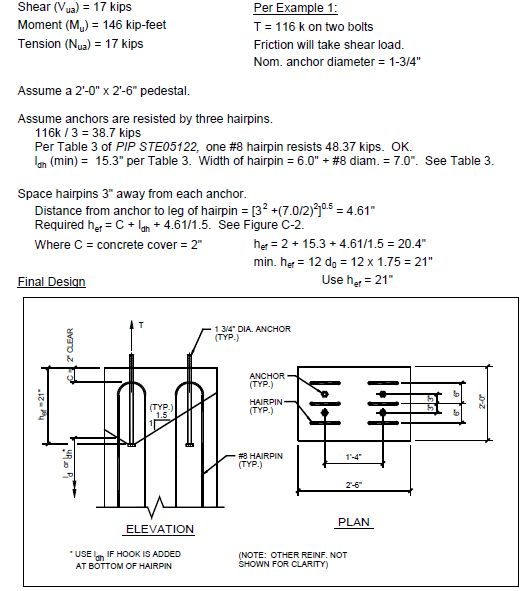LockeBT
Structural
- May 9, 2021
- 55
I am having trouble with concrete breakout (yayy thanks alot overstrength factor) on a pier foundation with circular anchor bolts pattern. Planning to utilize anchor reinforcements per Sect. 17.4.2.9 of ACI 318-14 to preclude breakout. However I am not quite sure how to detail it especially when my anchors will be a giant bolt-cage.
Also, fig. R17.4.2.9 suggests the use of surface reinforcement (shown below), is there a way of detailing to by pass this?

Also, fig. R17.4.2.9 suggests the use of surface reinforcement (shown below), is there a way of detailing to by pass this?




